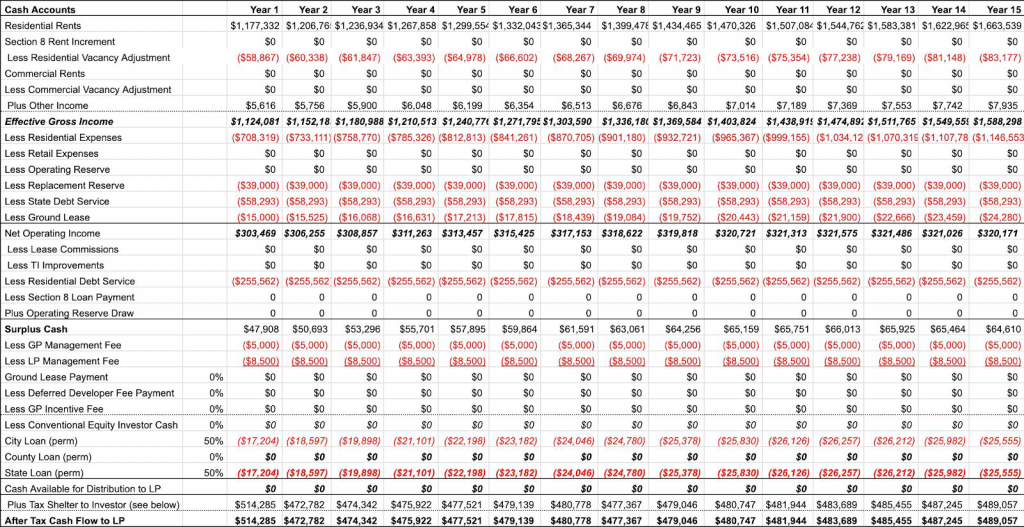At Berkeley, I worked alongside Leslie Aguayo, Sarah Vermeer, and Yiyang Wang in CP 238, the James R. Boyce Affordable Housing Competition Studio. This was our submitted proposal. In May 2019, we won first prize out of the three Glen Park teams.

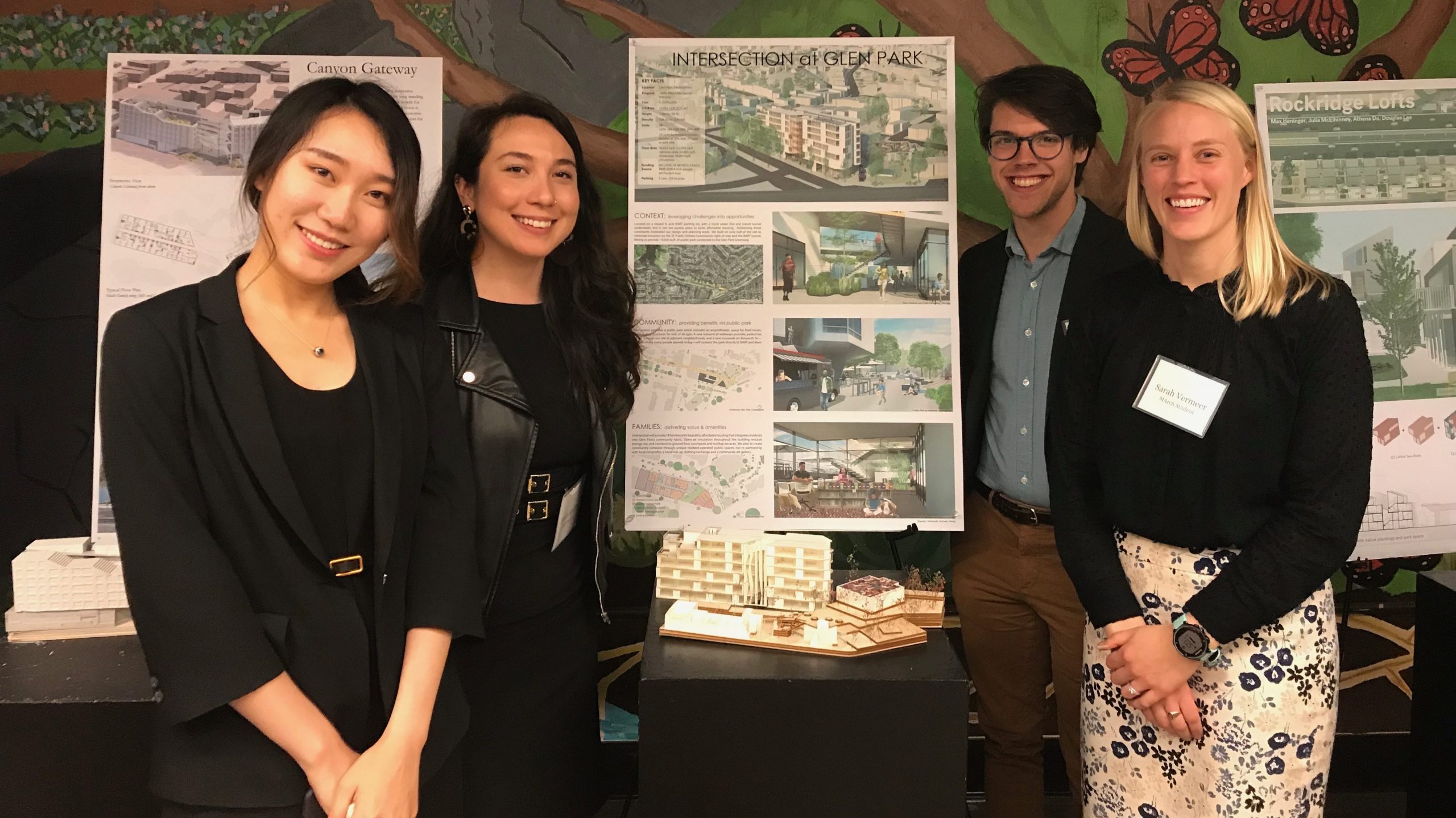
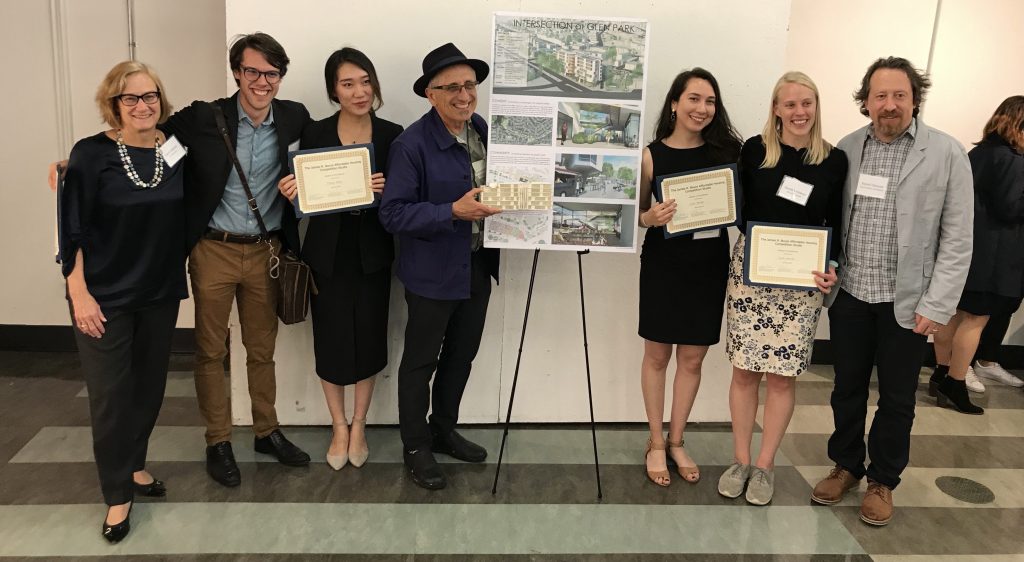
Project Summary
Intersection at Glen Park will be a new model for transit-oriented affordable family housing: one built to provide tangible value back to its surrounding neighborhood. Sited on a former BART parking lot, within short walking distance to BART and Muni, a public library, healthcare facilities, a market, and public schools, this development is an ideal location for affordable family housing. But Intersection adds unique value to this neighborhood: it enhances public pedestrian connections through the site, extends the Glen Park Greenway into the heart of the neighborhood, and creates a new public park at the heart of the community. The Intersection vision for this site benefits residents and neighbors alike, and seeks to build community between them. It also responds to the site’s complex design constraints with a project designed to be realistic, feasible, and cost-effective.
Units, services, and common areas at Intersection are all designed with small to large low-income families in mind. The 100% affordable development contains 78 units in a seven-story building, 80% of which contain two or three bedrooms. 25% of units are set aside for referrals of formerly homeless families. In-house supportive services guide multi-generational families toward greater well-being and self-sufficiency. Partnerships with external services enable us to program spaces that are dedicated to serving resident families in the arts, education, and in their material needs. Common areas on the ground floor are positioned to see frequent activity and create connections to the green spaces around them. Generous outdoor spaces will be used for family and community gatherings on rooftop terraces, ground floor courtyards, and the large rear park that is open to the public.
Proposed Program
Intersection at Glen Park will be home to 77 income-restricted apartments, and 1 2-bedroom manager unit, at a density of 104 du/ac. With six residential floors and one ground common/community floor, the building will use five floors of Type III wood framing over two floors of Type I concrete podium construction to reach its 85-foot height. On its ground floor, Intersection offers residents 10,092 sq.ft. of common spaces designed for families’ needs. All circulation in the building is open-air, to maximize light and air access. The two highest floors have connected open-air terraces, totalling 3,009 sq.ft., which overlook the neighborhood. The project has no retail or parking. To integrate the development with the Glen Park community, a pedestrian cut-through on the ground floor creates an alley with resident access to the building on one side, and resident-community amenities, including a hand-me-down clothing exchange and a community art gallery, on the other. Per San Francisco Mayor’s Office of Housing and Community Development guidelines, Intersection sets aside 25% of its units for referrals for formerly homeless families. With support from the Local Operating Subsidy Program, these families pay 30% of household income as rent. The remainder of the units have rents set at 60% of area median income.
| Unit type | Number | Avg. sq.ft. | 30% AMI | 60% AMI |
|---|---|---|---|---|
| 1-bedroom | 16 | 571 | 6 | 10 |
| 2-bedroom | 37 | 835 | 6 | 31 |
| 3-bedroom | 24 | 1,000 | 8 | 16 |
| 2-bedroom manager | 1 | 835 | / | / |
| Total | 78 u | 832 sq.ft./u | 20 u (26%) | 57 u |
Intersection’s proposed design emphasizes pedestrian connection to and through the site, and in so doing aspires to be a good neighbor by reweaving Glen Park’s urban fabric—and providing an active, community-driven alternative to ground-floor retail. By designing the site for high permeability of foot traffic, the design facilitates an easy integration of resident families and their neighbors. From the building’s two terraces, and through its open-air circulation, residents enjoy views of Glen Park’s surrounding hilly topography.
Intersection will be financed primarily with equity from 4% Low-Income Housing Tax Credits. Additional funding will come from San Francisco’s Mayor’s Office of Housing and Community Development, the California Department of Housing and Community Development’s Multifamily Housing Program pool, and the San Francisco Federal Home Loan Bank’s Affordable Housing Program. Permanent debt will be supported by basic rent receipts, which, in addition to the Local Operating Subsidy Program, will provide crucial operating support.


Site Context
Intersection’s site consists of 9 parcels, with an approximate buildable land area of 32,683 sq.ft./0.75 acres. The site is in use as the only remaining BART public parking lot in San Francisco, and abuts another BART-owned parcel containing an electrical and ventilation substation for the system.

BART owns the 8 contiguous parcels depicted above, fronting onto Bosworth St., with land area of approximately 14,500 sq.ft. Originally residential buildings, they were acquired and cleared during system construction, and have been used as parking since completion. BART has indicated that the lot is highly suited to transit-oriented development given its prime location within San Francisco, including supporting a past affordable family housing proposal. Building a 100% affordable development on the site could help to meet BART’s systemwide goal of 30% affordable TOD units. BART’s board has made extracting maximum value from its land portfolio a priority for its TOD planning, and interviews suggest they may expect market-rate compensation for the land. However, acquiring the land at full cost would put a fully affordable building out of reach; in addition, the land is difficult to develop and less attractive for market-rate projects, given the wide range of structural and approval restrictions in place, and a history of community opposition to development. Intersection, as a 100% affordable development, may have a unique ability to bridge community needs and city support to be built; our financial planning proposes a nominal ground lease of $15,000/year to BART, with the City of San Francisco keeping ownership of its rear parcel.
Infrastructure and Construction Restrictions
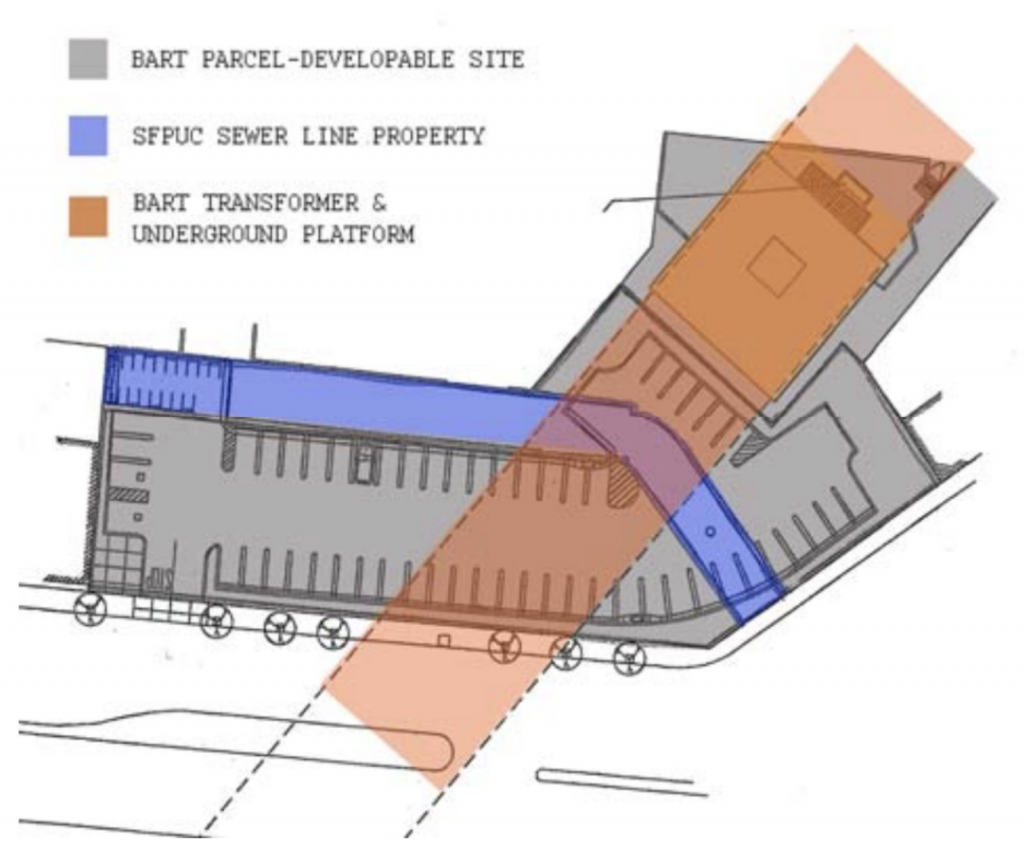
There are numerous restrictions in place on the site. The city-owned parcel that runs along the middle of the block is reserved as a San Francisco Public Utilities Commission right of way, with a trunk sewer line running underneath it. Upon consultation with SFPUC’s real estate team, we learned that they would strongly oppose the approval of any project that built on the parcel’s land area, or into its airspace, as they want to preserve emergency repair access to the underlying pipe. Landscaping on the parcel will be possible, subject to their approval. Furthermore, the Glen Park BART station platform (shown in orange) extends under the parking lot, and its ceiling is believed to be about 10 feet below the surface. This will require careful structural engineering to distribute weight on either side of the tunnel, but BART has not directly objected to construction on the surface. Lastly, the aforementioned BART substation cannot be modified or built over.
With these restrictions in mind, we have chosen the contiguous BART parcels as the maximum construction footprint for our proposal, with the city-owned parcel left as open space with a trail connection to the Glen Park Greenway, and to comply with rear setback requirements. We propose extending a small portion of the apartment building over the right-of-way’s airspace, which can be changed later upon further review with SFPUC. We believe that complying with these restrictions will allow us to reduce approval risk in the planning process.
Soil and Environmental Conditions
Further evaluation is needed, via pre-development environmental and seismic testing, to determine the exact situation on the site. Given its proximity to San Jose Avenue and Highway 280, the site is subject to Maher compliance due to local air quality; the land itself may also be contaminated due to emissions and the legacy of BART construction and parking. However, the site’s original residential use suggests that there are likely no major surprises to be found. Like much of the neighborhood, the site is vulnerable to soil liquefaction, which will be addressed by additional structural engineering. Additional solar and wind direction work will be done to understand any key design considerations on the site. Of note, the Glen Park BART station is in the Alemany Gap, which conducts cool, moist, fog-bearing air through the neighborhood—understanding and mitigating its negative effects will be critical to ensure resident comfort.
Neighborhood Context
The site is currently surrounded by residential and commercial uses, and serves multiple high-frequency transportation modes. The Glen Park neighborhood extends north and west from the site. Diamond St., the western boundary of the block, is the neighborhood’s main commercial strip; the core of retail activity is a half-block north at Diamond St. and Chenery St. To the west, the Glen Park Greenway extends to Glen Canyon Park, one of San Francisco’s largest urban parks. The Glen Park School, a public elementary school, is two blocks southwest of the site across Bosworth St. It is proximate to not only Glen Park BART station but also the I-280 freeway, and a number of San Francisco Muni bus stops. To the south, Glen Park BART station and the adjacent Glen Park/San Jose Avenue Muni stop sit across Bosworth St. To the east, San Jose Avenue runs on an elevated right-of-way on the other side of Arlington St. Highway 280/the Southern Freeway runs to the southeast, with an interchange to San Jose Avenue east of the BART station. The area is a transit hub which sees busy activity and could be served with better connectivity and pedestrian access. On site visits, we noted people jaywalking across Bosworth St. to access the neighborhood northeast of BART, and so we have included a crosswalk in our design. Portions of the site are green space, including a treed buffer that runs over the SFPUC right-of-way, along the back of the abutting residential parcels. A large variety of commercial and public amenities exist around the site, as depicted on the following map.



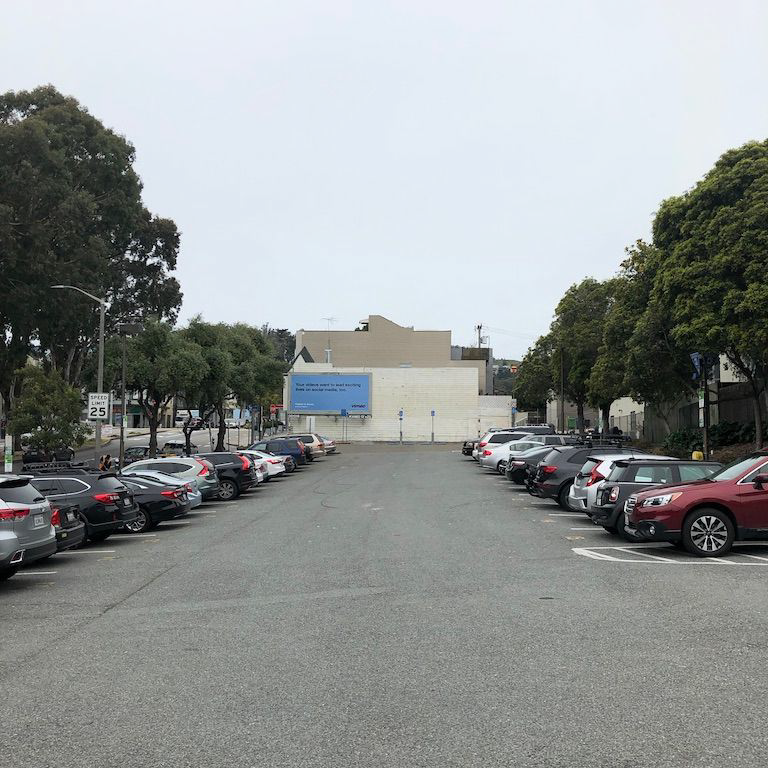
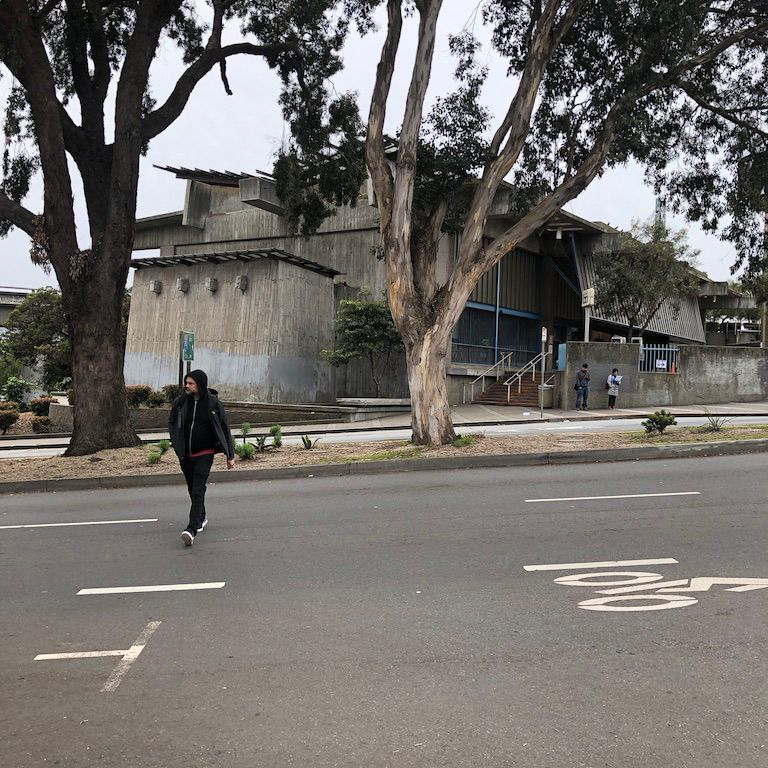


Affordability Needs
San Francisco has quickly become one of the least affordable cities in the country. With a mass influx of higher-income populations creating displacement, low income families are most vulnerable to housing insecurity and homelessness. According to the San Francisco Planning Commission, renter households are more likely to be cost-burdened than homeowners, with 46% of renters spending more than 30% of household income on shelter—including 25% spending more than 50% of their income. Renter households are more overcrowded, and over 15% of renters according to one study reported having been threatened with eviction in the past year.1San Francisco Existing Housing Study (6/25/18).
According to the same study, the second highest level of overpayment in the city was for renters of apartments in buildings with more than 50 units where more than 53% of reported total housing costs equaled 30% or more of gross household income.2Ibid. With 60% of San Francisco’s existing affordable housing located in the five eastern neighborhoods, Glen Park currently does not many have extensive affordable housing options. As it stands, only two affordable housing sites currently exist in Glen Park with the majority of the housing production categorized as 25-50% single family homes, and less than 25% 20+ unit buildings.
According to the 2017 San Francisco Homeless Count and Survey Comprehensive Report the number of homeless individuals counted was 7,499. These results support a large need for affordable housing production and safe homes for those most vulnerable to the fluctuations of economic trends and harmful living environments. By serving the needs of the low income families and formerly homeless adults, Intersection at Glen Park aims to address the city of San Francisco’s housing crisis to further address housing insecurity and homelessness.
Community Demographics
The Glen Park neighborhood is made up of two census tracts (217 & 218) in the broader San Francisco city and county area. The demographic breakdown of the tract in which Intersection is located (218) is as follows: 75.4% White, 14.4% Hispanic/Latino, 10.9% Asian, 3.5% Black/African American. The median household income adjusted for 2017 inflation rates was $137,969, significantly higher than San Francisco’s median of $96,265.3“Is an annual salary of $192,000 ‘middle class’ in SF?“, Curbed SF, 2/25/19. Approximately 17% of the population is under age 18, with 44% between the ages of 35 and 64.4Census data via SocialExplorer. The housing tenure of Intersection’s respective census tract reflects a 42% renter and 58% owner occupied breakdown.
Target Population
Given the aforementioned pressure for affordable housing and need for safe homes for formerly homeless and low income families Intersection at Glen Park’s target will serve low income families, single parent households and formerly homeless populations. The space is designed with parents and children in mind, paying attention to their needs and the services that this population would benefit from. Per San Francisco Mayor’s Office of Housing and Community Development guidelines, Intersection sets aside 25% of its units for referrals for homeless individuals and families. Intersection’s design caters specifically to nuclear and single parent households with a focused intention to provide services to promote healthy and thriving parents and children. Given what we know about the unequal geographic distribution of affordable housing in San Francisco, providing affordable units in Glen Park is a step towards greater equity. Increased access to a high resource site such as Glen Park affords opportunities including jobs, education and transportation for low income families while creating an entry point for self sufficiency and upward mobility.


Entitlements, Guidelines, Legal Approach
Current Zoning and Permitted Uses
Currently, the site is zoned P—a designation that indicates public ownership and use, and comes without detailed building specifications. The site will need to be rezoned in order to enable its development, as P zoning does not have associated guidelines. The surrounding block includes two different zoning designations: Neighborhood Commercial Transit (NCT), which allows for commercial and residential uses, and RH-2 residential.
Today, the site is subject to a 40-X height district, limiting construction to 40 feet.5Glen Park Community Plan Zoning Proposal, draft, Sep 2011. As it stands, thanks to its P designation, the site is not subject to any special use district, legislative setbacks, or limited and nonconforming uses.6SF Planning zoning look-up tool finding.
| Item | Requirement |
|---|---|
| Height & Bulk Limits | 30 feet and 40 feet7Planning Code sections: 102, 105, 106, 250–252, 260, 261.1, 270, 271. See also Height and Bulk District Maps. |
| Height Bonus for Active Ground Floor Uses | 5 feet8Planning Code sections: 263.20. |
| Rear Yard Setback | Required at the Second Story and at each succeeding level or Story of the building, and at the First Story if it contains a Dwelling Unit: 25% of lot depth, min. 15 feet9Planning Code sections: 130, 134, 134(a)(e), 136. |
| Front Setback/Side Yard | None10Planning Code sections: 130, 131, 132, 133. |
Impact of AB 2923
AB 2923 is a 2018 California state law that allows BART to substitute its minimum TOD density and height zoning standards on parcels within a half-mile of BART station entrances, if local zoning would not allow development in line with BART’s goals.11“BART to Get New Zoning and Development Power — If Brown Signs Bill.” KQED The California Report, 8/28/18. The agency’s 2017 draft TOD guidelines suggest a minimum of 7 stories and 75 du/ac in what it calls “urban neighborhood” areas, including Glen Park. Its standards require no car parking and 1 spot of secure bike parking per unit, which will be provided in ground-floor bike lockers.12BART Transit-Oriented Development Guidelines, May 2017. AB 2923’s text allows BART to set a height no more than 15 feet above the highest zoning-approved building height within a half-mile of the station.13Text of AB 2923, published 10/1/18. In this case, the Jewish Homes Special Use District located south of the BART station has an approved maximum height of 80 feet, which would mean that this parcel could host a building of up to 95 feet in height. Intersection has been designed with these guidelines in mind.
Proposed Zoning
To supplant the existing P designation, we propose to pursue a special spot zoning district, based on the Glen Park Neighborhood Commercial Transit (NCT) zone adjacent to the parcel, with a proposed height limit of 85’. The existing zoning allows for mixed-use development, with housing or office above ground-floor commercial use required for frontage on Diamond St. and Chenery St.; given our frontage on Bosworth St., we will not be subject to this requirement and can thus not build retail.14Glen Park NCT planning code text. Glen Park NCT also requires a rear yard setback, which is why we propose to include the City-owned SF Public Utilities Commission right-of-way—it is approximately 25% of the total depth of the site, which is the specified setback depth. The district has no density limits, and we propose to rely on BART TOD guidelines to eliminate the need for parking.15Text of AB 2923, published 10/1/18. We believe this rezoning will be feasible with BART and city support.
Community Approvals Strategy
Like many affordable housing developments, Intersection does not expect to be immune to community pushback. To address these challenges Intersection’s design has incorporated aspects to fit within the existing aesthetic context of the neighborhood. Such aspects include constrained massing as well as inviting circulation, porous design and publically accessible programming. While the height and reduction of neighborhood parking will likely generate community opposition during the approvals process, we strategically intend to create net benefits for all of the Glen Park community using Intersection as an anchor for increased social infrastructure. This includes the extension of the Glen Park Greenway, a crosswalk to better connect BART to the neighborhood, community-accessible ground floor amenities, public furniture and installations, with room for food trucks and other public park programming benefits. We will argue that the overall advantages that Intersection will bring will outweigh parking and height concessions. Intersection is also likely to realize significant support from city government with its high-demand family affordable housing in a high-opportunity neighborhood.
Legal Structure
A limited-liability company (LLC) will be formed to manage Intersection, of which 0.01% will be owned by the developer as managing and general partner, and 99.99% will be owned by the tax-credit equity investor as limited partner.
Design Guidelines
Developments in the Glen Park neighborhood are subject to the Glen Park General Plan Urban Design Guidelines, with recommendations for consistent design implementation, as follows:
- Buildings should be built to the sidewalk
- Building facades should follow a simple rhythm of bays
- Buildings must include a clearly defined base, middle and roof
- All facades visible to public streets should include 3D detailing16Glen Park Community Plan Summary, November 2003.
Intersection’s design is directly informed by the Glen Park General Plan Urban Design Guidelines. There is a street frontage built to the sidewalk that includes clear visibility of 3D detailing and a subtly unique rhythm of bays. The facade has an identifiable base at the concrete podium, a mid-section of undulating bays, and a top section of bays with a slightly shifted rhythm. The roof terraces make an attractive green finish to the building and are prominently visible from downtown street views. Intersection’s facade layout is intended to feel familiar to neighbors as a modern update to Glen Park’s design dialect. Material and color finishes have been chosen to fit in context.


Building Design
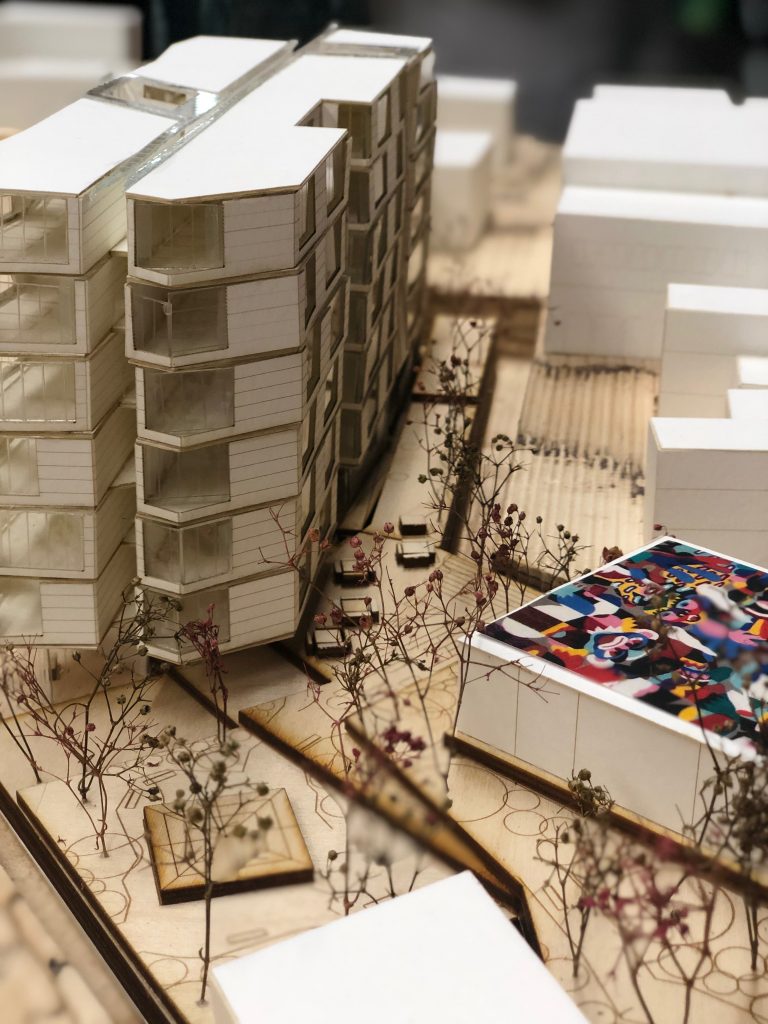
Intersection at Glen Park’s design has a mass which maximizes the buildable area within the site’s right of way. Lines were drawn from important context and used to slice through the building mass at ground level. This slice created pedestrian passageways through what would otherwise be an impassable building mass. Specifically, the massing enables connections through the site to the steps of the BART station, to the neighborhood to the North by extending the lines of Carrie St., and to the Glen Park Greenway by shifting the right of way to be a pedestrian corridor.

At the rear of the building these pedestrian connections converge at a plaza-like space where children can play safely away from the street. Community spaces on the ground floor are positioned to look out onto this area, making it easy for resident gatherings to spill out onto the plaza outside, or for moms to watch their children from indoors. Open-air circulation throughout the building is used as a way to create natural air circulation, minimizing the demand of mechanical air control. The open air outdoor circulation will provide greater long term cost efficiency than interior corridors by limiting HVAC expenses, and is intended to generate greater accessibility to secure outdoor space for residents that is directly adjacent to the public park. Safety and security considerations are applied with placement of the property management office near the lobby and with direct sight lines of most ground floor foot traffic. Intersection will have a two-floor Type I concrete podium with five Type III floors above.


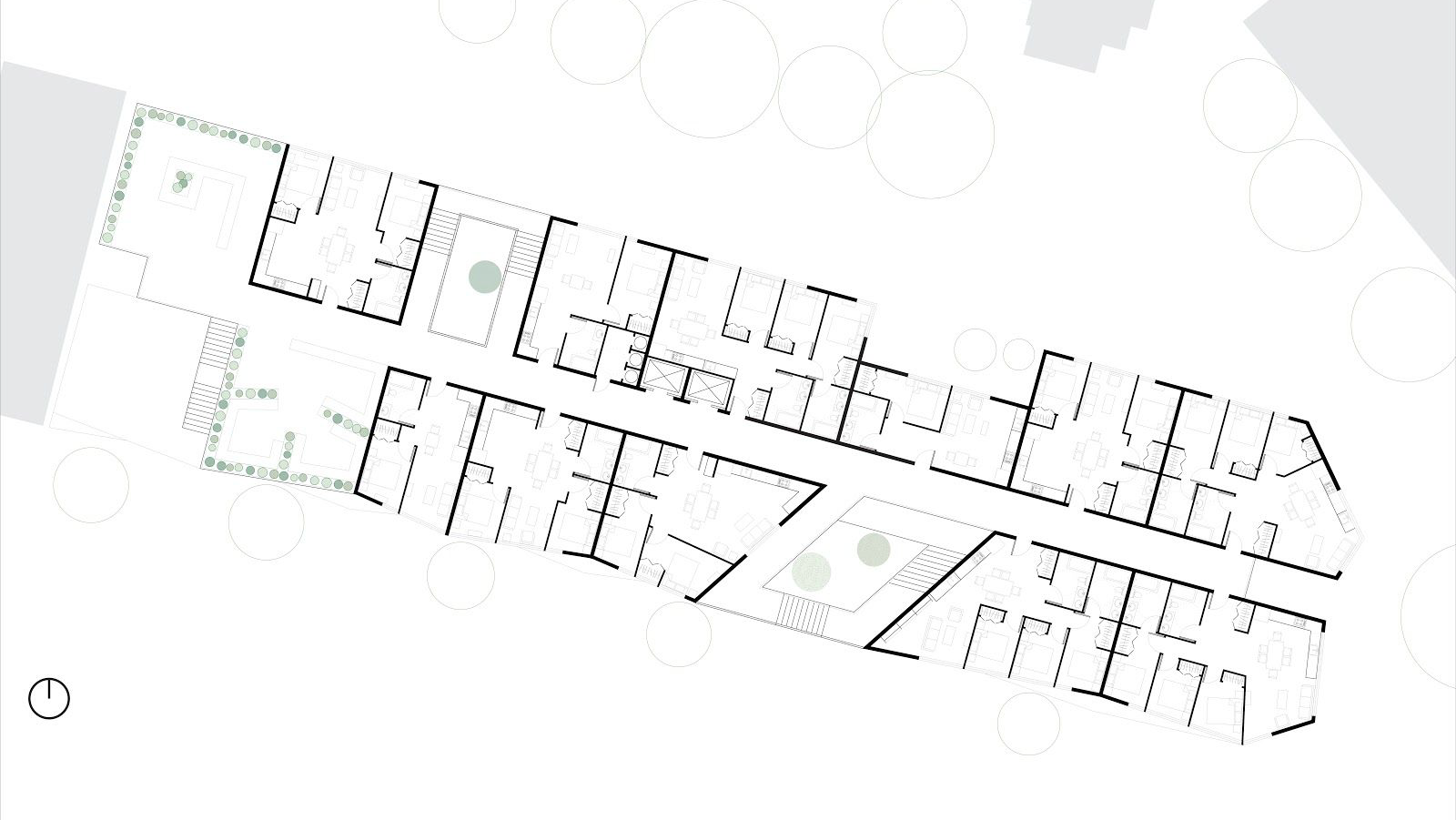
Common Space
The ground floor plan enables public foot traffic to circulate through our site, a concept that has been central to our design goals. The spaces for residents are accessible only by entering inside the lobby; the front door is easily found at the building’s focal point along Bosworth St, where the building mass is sliced in two. The front desk is self-contained and can be partitioned off if needed; it also provides direct views of the elevators and much of the circulation through the ground floor. Mailboxes and a digital locker for packages are located in the lobby as well.
From the lobby residents pass onto a main open-air corridor off which most amenities are conveniently located. These include the community room, a classroom, the elevators and stairs, laundry, property management, and support services. The open-air corridor leads to courtyards at both ends, which bring natural light into the heart of the building. There is a small conference room located between the property management office and the support services office, should these staff need to meet privately. The support services are in a central part of the building which residents would pass on a regular basis, though frosted glass maintains privacy while letting in light from the courtyard. The community room opens onto one of the courtyards to enable a natural spill-out of events into the gardens and play spaces at the rear of the building. Both courtyards have sight-lines to the sky directly above, and are skirted by vertical circulation to draw the eye upwards. The laundry room looks out to the second courtyard where children can play.
Across the public thruway in the southeast mass are the more public spaces: the resident-operated clothing exchange and the art gallery. These spaces will be activated by residents with help from various service partnerships. This is also where bike storage and trash are located. Bikes can easily come and go to the street without crossing paths with the majority of resident circulation on the ground floor, and have quick access to the street. The door to the bike storage is locked and can be observed from the lobby to enhance security. From the trash room, trash is moved efficiently away from the building to the corner of the street for pickup.
Sustainability Approach
Intersection aspires to embrace sustainability in its design and construction. Efforts will be made to build with renewable and minimally harmful materials and a full slate of advanced construction methods. Energy-efficient appliances and water-saving plumbing fixtures will be included in all units. South- and east-facing windows will use thicker glass to comply with noise management by-laws in San Francisco, providing an insulation benefit. The use of open-air circulation throughout the building, with above-code waterproofing, will reduce the total amount of HVAC usage and integrate natural lighting. On the building’s roof, a 70 KW solar PV installation will offset some energy use and potentially generate excess power for the grid. Intersection also is proudly focused on maximizing transit usage, by providing locked bike storage for residents and no car parking on site.
Section Renders
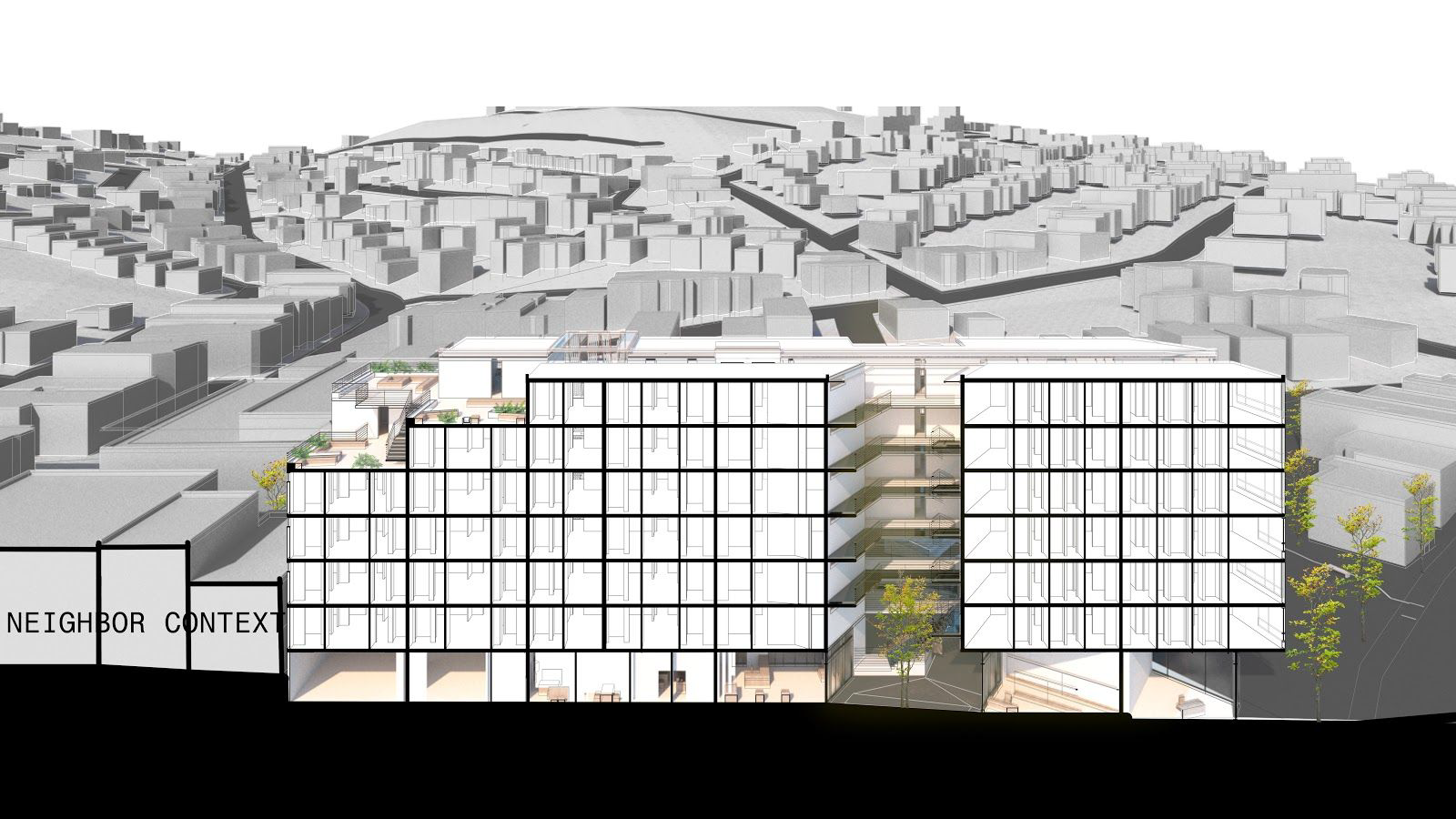
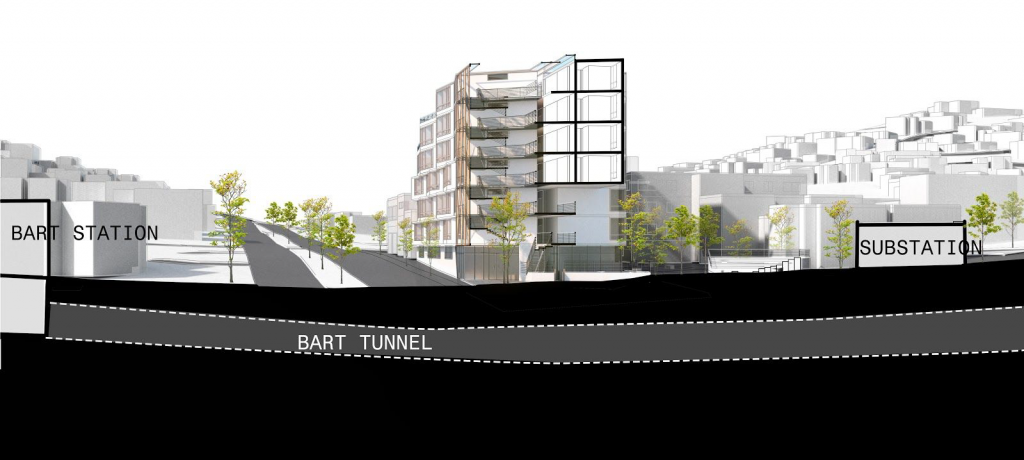
Perspective Renders
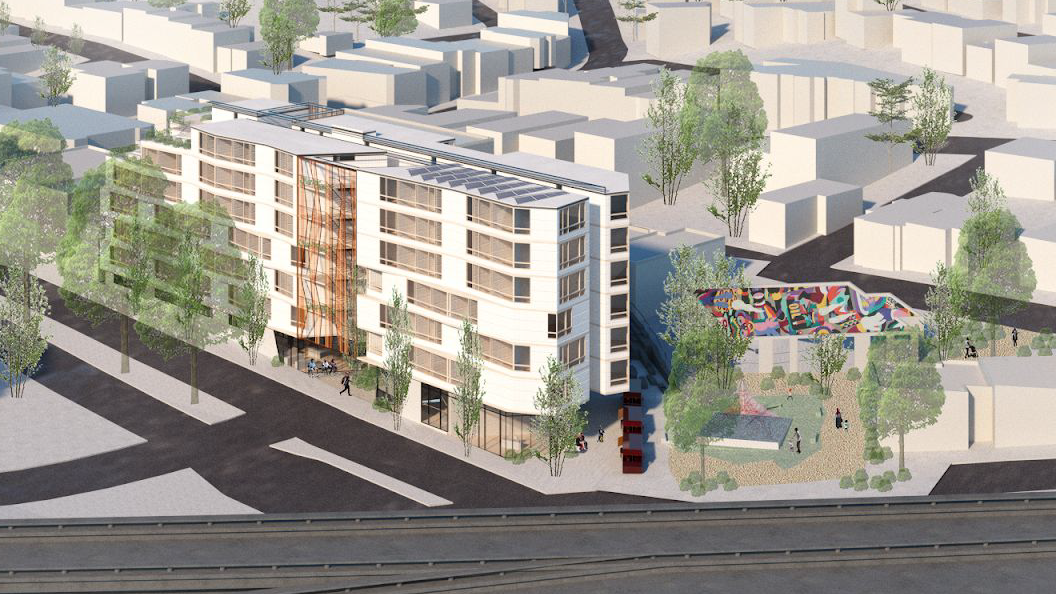






Programming
Services for Formerly Homeless Families
Intersection will partner with San Francisco Compass Family Services, a nonprofit organization that supports homeless families in securing long-term housing. Compass also provides a comprehensive set of services: information and referrals in the city that benefit homeless families, multi-lingual parent education classes, on-site mental health screenings and crisis counseling, case management actions plans for education, employment and housing goals, and an after school homework and tutoring program for older children and teens. One full-time homeless services case manager is included in the budget for the project, in addition to $500 per unit per year in services funding; for the 20 units of housing dedicated to formerly homeless families, San Francisco’s Local Operating Subsidy Program funding comes with a specific set of service provision and access requirements which will be met thanks to its financial support.
Services for All Families
At the heart of Intersection is a mission to provide housing that meets the needs of lower-income families, which will set residents up to succeed in the rest of their lives. Upward mobility is a focus of the services provided on site, maximizing the opportunity that Glen Park presents for families who might not be otherwise able to access it. The project’s budget includes one resident services coordinator who will manage programming in partnership with community and mission-driven organizations. Services provided will focus on financial literacy, job training, and health and wellness, all with the aim to support increased self sufficiency, empowerment, and community. The slate of planned services will vary to accommodate the wide spectrum of needs for people of different ages—from toddlers to teens, parents to grandparents.
Partnerships will be key to meeting these disparate needs. The Bay Area has a rich network of service providers who we have identified as potential partners. 826 Valencia, a San Francisco nonprofit organization dedicated to supporting under-resourced students with their writing skills could be brought into the classroom on-site to run after-school programming, much as they recently have in an affordable housing project in Mission Bay. Loved Twice, a 501c3 charity that clothes newborns in need by collecting, distributing and reusing baby clothing and blankets for infants in need, could help to program and coordinate the resident-led clothing exchange space on the ground floor. This partnership will allow for the use of our common space as a trading post, thrift swap where residents and neighbors can exchange items they no longer use for ones they may be in need of from each other. BAYCAT, a social enterprise providing education and access to jobs for low income youth, youth of color and young women through storytelling and filmmaking, could be brought in to run teen-specific programming for residents, empowering them to explore and embrace the opportunities the neighborhood provides. Intersection will also partner with SF SPCA to host resident dog therapy days in the classroom, and ArtSpan, a local non-profit dedicated to cultivating an art community in San Francisco, to activate the ground floor art gallery space. The outdoor space at the rear of the building, which includes a garden beside the BART substation currently being planned by Glen Park residents, will serve as a public park, landscaped and available for programming for the entire Glen Park community, with room set aside for food trucks to park and for neighborhood social events. We also aim to work with BART and community arts organizations to muralize the substation, given its proximity to the building and the public park.

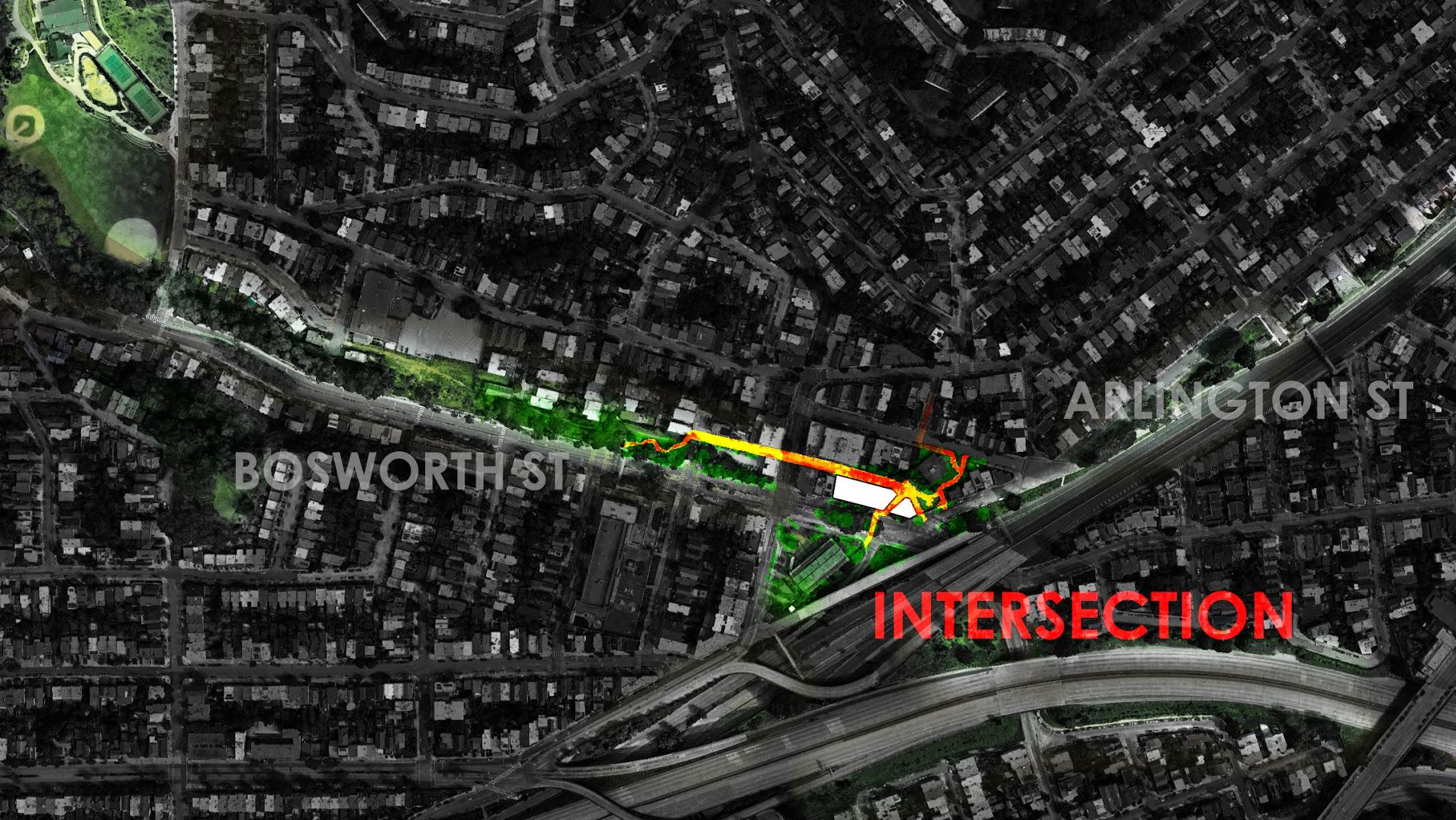
Financing Structure
Intersection at Glen Park leverages a combination of federal, state, and local funding to provide family-focused affordable housing in a transit-dense neighborhood with a great mix of public amenities. The largest portion of the project’s capital stack comes from 4% Low Income Housing Tax Credit equity, with large loan-based disbursements from the San Francisco Mayor’s Office of Housing and Community Development and the California Department of Housing and Community Development’s Multifamily Housing Program. Debt supported by residential rental income helps to close permanent funding gaps. These sources support Intersection’s vision of unlocking land to welcome new families to a great neighborhood, and of affordable housing as an integrated community amenity, stitching together resident families with the broader fabric of Glen Park and its surroundings. Furthermore, this financing structure enables project feasibility with no retail component, to maximize the community-serving aspects of its unique flexible spaces.
Total proposed costs for the project, including soft, hard, and financing costs, are $57,756,676. Intersection will be built entirely on a BART-owned parcel currently serving as a parking lot, with a long-term ground lease expected to be signed for a 55-year term, with the option to extend to 99 years at the close of construction. Terms for this lease are to be negotiated further, with an expected minimum annual payment of $15,000 supported by rental expenses included in current forecasts; as the land will remain under BART control, calculations assume no purchasing costs. This may be subject to negotiation with BART, given the expectation of sale generating a market-rate return for the land on the site.
Soft costs for the project are estimated at $5,815,188, including a 10% contingency per MOHCD funding regulations. In the pre-development phase, we estimate $2,083,390 in costs for architecture and engineering, and $353,117 for legal, site testing, and start-up expenses. During construction, we estimate $1,326,000 in permitting and impact fees, and $1,528,929 for other costs (including insurance, taxes during the construction period, and other start-up expenses). Given the site’s history of residential use prior to BART construction, we have not included higher than normal expenses for site testing and remediation.
Hard costs are estimated at $46,297,545, including a 5% contingency per MOHCD funding regulations. This includes an estimated $750,000 in offsite work related to the addition of a crosswalk connecting Intersection with Glen Park BART across Bosworth St., $500,000 toward landscaping the 10,469 SF of courtyards and grounds, and $250,000 for the purchase and installation of a 70 KW solar PV array on the roof. With help from Cahill Contractors, we have estimated construction costs of $450/sq.ft. for both residential and common/community space construction, as we are planning a fairly standard 5-story Type III over 2-story Type I wood-on-podium construction methodology, given the site’s configuration and small size. Costs could in theory be reduced via a shift to modular construction, but given the urban location and geometric abnormality of the site, this would be less feasible, and result in fewer possible residential units.
Financing costs of $3,172,573 include $2,730,074 of interest on $30,093,304 of CDLAC-issued bonds for the construction portion of the project (calculated based on the per-unit maximum amount by number of bedrooms), and $442,500 in loan fees and issuance costs. 6 months’ operating reserves of $501,441 and a $1,970,000 developer fee account for the remainder of the project’s uses.
Permanent debt of $3,750,000 is supported by rent receipts. We chose to take a loan smaller than the maximum supportable to provide additional cash flow for a high operating expense load, including staff and structured service funding for the high needs of families, including the 25% of units housing the formerly homeless. SF MOHCD Local Operating Subsidy Program funding helps subsidize rents for the 20 units set aside for homeless family referrals, to comply with MOHCD funding guidelines. These units have rents set at 30% of area median income; the remaining 57 affordable units are set at 60% of area median income. Calculations show positive net cash flow beyond the 15th year of operations, with a positive capital account in Year 10 to unlock credits for our equity investors.
Development Budget
Project Uses
| Uses of Funds | Amount |
|---|---|
| Land Costs | Ground lease |
| Soft Costs | $5,815,188 |
| Predevelopment Phase | $2,436,507 |
| Construction Phase | $2,854,929 |
| Contingency (10%) | $523,682 |
| Hard Costs | $46,297,545 |
| Residential Construction | $42,592,900 |
| Crosswalk Construction | $750,000 |
| Landscaping | $500,000 |
| Solar PV Array & Installation | $250,000 |
| Contingency (5%) | $2,204,645 |
| Financing Costs | $3,172,573 |
| Operating Reserves | $501,441 |
| Developer Fee | $1,970,000 |
| Total Development Costs | $57,756,676 |
| Retiring Construction Bond | $30,093,304 |
| Total Uses | $87,849,980 |
Project Sources
| Sources of Funds | Amount |
|---|---|
| CDLAC Construction Bond | $30,093,304 |
| Permanent Residential Loan | $3,750,000 |
| Limited Partner Pay-In | $23,047,146 |
| SF MOHCD | $16,714,530 |
| CA MF Housing Program | $13,475,000 |
| FHLB Aff. Housing Program | $770,000 |
| Total Sources | $87,850,081 |
Key Project Cost Assumptions
| Ground lease | $15,000/year |
| Architectural/Engineering Fee | 4.5% |
| Residential Structure Cost | $450/SF |
| Common/Circulation Cost | $450/SF |
| Offsite Crosswalk Construction | $750,000 |
| Impact Fees | $3,000/u |
| Building Permits | $14,000/u |
| Total Development Costs/Unit | $740,470/u |
| Total Development Costs/SF | $614.29/SF |
Predevelopment Funding Sources
- San Francisco Mayor’s Office of Housing and Community Development: $2,688,136 • MOHCD has indicated that they are willing to provide up to $3,000,000 in predevelopment funding on similarly-sized projects. These funds will be used to support all soft costs for the pre-development phase, with the majority ($2.1M) going toward architectural and engineering design fees, and the remainder supporting legal, site testing, consulting, and LIHTC start-up costs, as well as MOHCD interest accrued in the phase. These funds are offered at an interest rate ranging from 0% to 3% for up to 3 years, with convertibility into MOHCD’s construction loan support. We have budgeted with a 0.5% interest rate to ensure financial feasibility, per the MOHCD guidelines. We have assumed interest payments will accrue to be paid during predevelopment, and then shift to a residual-receipts basis afterwards. One key stipulation of MOHCD funding for a project is that it must set aside 25% of units for referrals from formerly homeless populations. We have made our calculations reflect that requirement, and assume that we will thus have access to Local Operating Subsidy Program funding to offset ongoing rent payments and service provision associated with the formerly homeless residents. We have also assumed 24-hour front desk coverage per these needs.
Construction Funding Sources
- CDLAC Construction Bond Issue: $30,093,304 • A bond issue from the California Debt Limit Allocation Committee will provide the bulk of financing for the construction of Intersection. The project passes the 51% tax-exempt bond test, as its $30,093,304 bond amount is 52% of its basis and land cost of $57,756,676. The following loan terms are proposed: a 24-month loan period; interest rate set at the 30-day LIBOR plus 2.5%. We have run our forecasted calculations with a 1.5% cushion given the rising interest rate environment, leading to a total interest rate of 6.48%. We have not assumed any interest rate benefit from a tax-exempt bond issuance, but this could reduce our real interest rate by up to 0.5%. This cushion amount will also provide additional security to the project’s financial situation during the construction phase. The $30,093,304 amount has been calculated to be below the maximum per CDLAC guidelines, as indicated below:
| Unit type | Max loan ’19 | # of units | Supportable bonds |
|---|---|---|---|
| 1-bedroom | $420,000 | 16 | $6,720,000 |
| 2-bedroom | $447,500 | 38 (incl. mgr) | $17,005,000 |
| 3-bedroom | $492,500 | 24 | $11,820,000 |
| Total | 78 | $35,545,000 max |
| Construction costs | $46,297,545 |
| % financed | 65% |
| Interest rate | 6.48% |
| Term | 24 mos |
| Drawdown factor | 55% |
| Lease-up rate | 18 u/mo |
| Fees/start-up costs | 1% ($300,934) |
| Construction bonds | $30,093,304 |
| Construction interest | $2,730,074 |
- San Francisco Mayor’s Office of Housing and Community Development: $14,026,394 • MOHCD has indicated that they are typically willing to support a project to the tune of $250,000 per unit, with some extraordinary circumstances warranting $350,000 per unit. Including the aforementioned $2.7M in predevelopment funding, this additional construction funding would have MOHCD contributing a total of $16,714,530 to the project—about $217,000 per unit, lower than the full offering. These funds, derived from inclusionary in-lieu payments from market-rate development, are offered at an interest rate that ranges between 0% and 3% for a term of 55 years, with repayment on a residual receipts basis. We have budgeted for an interest rate of 0.5% on these loans to ensure financial feasibility, per MOHCD guidelines. Given high construction costs and a rising interest rate environment, we will have to coordinate with MOHCD to shift the majority of its funding support to the construction phase from conversion; typically, two-thirds of funding comes during the construction phase with the remaining third coming at conversion. Alternately, we may seek additional short-term philanthropic gap funding, to be repaid at conversion with the remaining MOHCD allocation. We could also solve this problem by requesting a full $250,000 per unit, but believe that MOHCD will support the logic of negotiating timelines for a smaller amount of total funding, to ensure its money builds the most units.
- Federal Home Loan Bank Affordable Housing Program: $770,000 • The San Francisco Federal Home Loan Bank typically contributes $10,000 per income-restricted unit in funding to affordable projects, at an interest rate of 0% for 55 years, repayable on a residual-receipts basis. Flexibility in disbursement timing allows us to request the full amount to support construction.
- Partial 4% LIHTC Equity Limited Partner Pay-In: $9,910,273 (43% of total) • Given the underlying basis of the project, Intersection is expected to receive a Tax Credit Allocation Committee allocation of $23,047,146 for the noncompetitive 4% program that also grants it access to CDLAC tax-exempt bond funding. We selected the 4% program for feasibility reasons, given the managed pipeline of 9% projects under MOHCD’s jurisdiction and the city’s prioritization of RAD and HOPE SF developments. Given San Francisco’s competitive LIHTC environment, we believe that a net pay-in factor after syndication of $1.00/credit is realistic for the near term. We propose to structure pay-in timing so the project receives 43% of the amount to support construction costs.
Permanent Funding Sources
- Remaining 4% LIHTC Equity Limited Partner Pay-In: $13,136,873 (57% of total) • Per the notes in the item above, we would intend to structure our pay-in timing so we receive the remaining pay-in amount at conversion (with 1% held back for 8609 filing).
- California HCD Multifamily Housing Program: $13,475,000 • Funded by a $1.5B bond issue state voters approved with Proposition 1 in the 2018 election, the Multifamily Housing Program plans to offer roughly $175,000/unit in deferred-payment loan funding, at a 3% simple interest rate over a 55-year term, to be repaid on a residual receipts basis. Terms remain to be finalized, with an overdue NOFA (listed on CAHCD’s website as anticipated in April 2019) that will provide additional clarity. The program requires an annual mandatory debt service payment at 0.42% of principal plus interest, which is considered an operating cost by other permanent lenders, reducing the total supportable private-lender loan amount. By limiting state funding to the MHP, the project complies with program–stacking limits at the project level.
- Private-Lender Residential Permanent Loan: $3,750,000 • The basic unit rents of the project, net of operating expenses and mandatory state debt payments, have a stabilized annual NOI of $303,469. We have assumed a permanent loan interest rate as follows: the 10-year Treasury yield (currently 2.50%), plus 1.5% spread. Like the construction loan, we have assumed a 1.5% cushion on top of that rate to provide financial contingency to the project. Loan terms are summarized below.
| Loan support source | Residential rents |
| Net Operating Income (NOI) | $303,469 |
| Interest rate | 5.5% |
| Loan term | 30 yrs |
| Amortization | 30 yrs |
| DCR | 1.15 |
| Max loan based on DCR | $3,872,152 |
| Loan amount chosen | $3,750,000 |
| Origination cost | 0.75% ($28,125) |
| Stabilized resid NOI | Total | Per unit (77 u) |
|---|---|---|
| Rental income | $1,177,332 | $15,290/u |
| Other income | $5,616 | $73/u |
| Less vacancy | ($58,867) | ($765/u) |
| Less expenses, ground lease | ($723,319) | ($9,393/u) |
| Less mandatory CA debt pmt | ($58,293) | ($757/u) |
| Less replacement reserve | ($39,000) | ($506/u) |
| NOI | $303,469 | $3,941/u |
- San Francisco Local Operating Subsidy Program (for rent top-up/service expenses) • MOHCD has indicated that the homeless referral set-aside units in the building would be eligible for an operating subsidy from the city’s general fund. LOSP works to cover the gap between restricted unit rent levels at 30% of area median income and 30% of income for formerly homeless tenants, seeking to absorb some of the additional costs incurred for servicing the units. LOSP contracts persist for 20 years; our calculations reflect ongoing subsidies.
Operating Budget Assumptions
| Residential monthly gross income | $98,111/mo |
| Other monthly gross income | $468/mo |
| Residential rent inflation factor | 2.5%/yr |
| Residential expense inflation factor | 3.5%/yr |
| Residential expenses | $9,081/u/yr |
| Residential Year 1 vacancy | 5% |
| Residential stabilized vacancy | 5% |
| Replacement reserve | $500/u/yr |
Appendices
Development Timeline

15-Year Forecast Operating Budget
